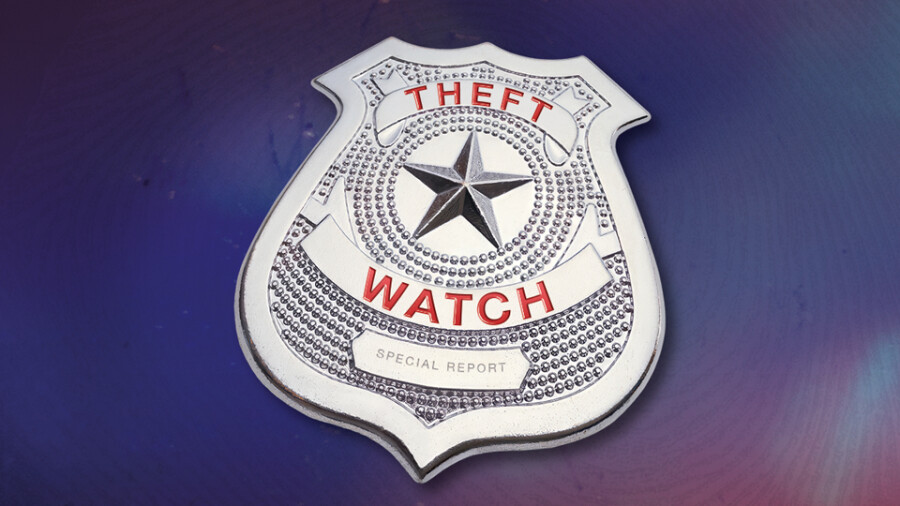Shoplifting has always posed a persistent challenge for retailers, and its effects reach far beyond simple loss of inventory. Theft can disrupt operations and saddle retailers with the cost of increased insurance premiums and heightened security measures. Robust security protocols can also negatively impact customers’ shopping experience. These days, it’s increasingly common to see big-box and convenience stores locking away in-demand goods like health and beauty products, forcing shoppers to press a button and wait for assistance in order to access them.
The problem is not limited to major or mainstream retailers. When adult stores suffer from theft, the consequences include not just financial losses but also a diminished sense of trust and safety for customers and staff alike.
Theft can be particularly frustrating for adult retailers, since creating a safe and welcoming environment is essential for putting customers at ease.
“Theft can affect employee morale,” says Carly S, the customer service and product manager of Spectrum Boutique. “When you care about your job and love your store, it can feel like a personal attack or a colossal violation when people steal from you. It’s a huge bummer.”
Theft can be particularly frustrating for adult retailers, since creating a safe and welcoming environment is essential for putting customers at ease while they are shopping for items to explore intimate desires.
Jade Harveland, a sex educator and Enchantasys staff member of 14 years, has seen this firsthand.
“Nothing is more irritating than knowing we have an item that’s a perfect fit for a customer in need, quickly checking stock on the computer and feeling the rush of seeing we have one left in inventory — only to lead my client to an empty or ripped-open package,” Harveland laments. “This causes us to have to sensor and tape packages shut, adding time to the process of getting the product onto shelves and restricting what is readily available for purchase. This hurts not just our small business, but also our customers. Stealing hurts the community as a whole.”
Guido Enrique Castro, owner of Chile-based Dominame, thinks that adult stores may be experiencing a higher rate of theft due to consumers’ increasing awareness of their innovative tech.
“In the last two years, there has been a surge in high-end toys featuring special technologies, smartphone connectivity and more,” Castro says. “This has resulted in the theft of sample items meant to help customers understand the product.”
Other retailers attribute the problem to root causes not specific to the pleasure industry.
“The main contributing factor to this trend is the ever-increasing drug epidemic that has moved into our community over the last decade,” says Nicole, the manager at Smitten Adult Boutique in Manitoba, Canada. “This has resulted in one of our worst thefts, in which a lone individual came into our business and, within five minutes, filled their arms with over $1,000 in lingerie, assaulted an employee and then ran from the building to a getaway vehicle that was waiting for them.”
Warning Signs and Likely Suspects
The types of products stolen from adult stores run the gamut of sexual desires and kinks. While smaller items may be easier to sneak into one’s pocket, even items considered too large to steal can disappear from shelves. So can display items that might seem like less appealing targets due to having been handled by numerous customers. In fact, Kristyn Clarke, manager of His and Hers Couples Boutique, reports that testers are some of the top items stolen at her store.
One common trend retailers report is that thieves operate in pairs or groups.
“Be on the lookout for the couples that come in together but instantly separate, especially if one has questions and the other seems not to want to be anywhere near you,” Harveland warns. “The talker is actively trying to keep you looking over here while the other is ripping boxes or pocketing items.”
Heidi Lowe Frix, owner of St. Petersburg, Florida-based boutique Frisky Business, also cited the “split and distract” routine. In addition, she says, most of the shoplifters in her store are women and are most active during peak hours, when it’s easier for thieves to blend in with customers.
During her years managing adult retail locations, Carly S developed a knack for spotting likely shoplifters — such as 18-year-olds after a day of college classes — and a sense of when to be most watchful.
“Late nights on weekends, when people have been drinking, can become problematic — especially when you work at a location that is surrounded by bars,” she shares. “Even the most level-headed person can make bad decisions while drunk. This is also true for the after-brunch crowd on Sundays.”
Corbella advises keeping a close eye on shoppers who have large bags.
“The most common way to steal is via a shopping bag,” she says. “Now that stores don’t have bags, it’s more common for patrons to have larger reusable bags. They will put the bag against the table and knock the items directly into the shopping bag.”
At Smitten, Nicole says, she’s observed changing trends in theft. Previously, she notes, smaller thefts — under $100 — occurred more frequently, and the perpetrators tried to be sly about getting their “five-finger discounts.” A popular tactic was removing a product from its box and placing the empty packaging back on the shelf, or tucking products up a sleeve while shielding what they were doing from surveillance cameras. As time has passed, however, she has seen more brazen thefts of higher-value items.
When dealing with the public and sniffing out potential shoplifters, Nicole says, she often finds herself relying on intuition.
“I’m rarely wrong when my internal warning alarm starts to go off!” Nicole says.
Harveland feels the same way.
“If anyone doesn’t have a good time in my store, they are the kind of person that chooses to be the problem,” he estimates. “For example, if we ask them to check their bags and they throw a fit.”
Castro says Dominame staff is trained to spot warning signs in customer behavior.
“By staying attentive without being intrusive, we have been able to decrease the likelihood of theft,” he says. “It helps to recognize the difference between customers who simply need a gentle nudge to start a conversation, and those who seem to avoid engaging due to fear or nervousness.”
Vigilance and Deterrence
Romantic Adventures owner Tami Rose says her approach to addressing theft was inspired by a veteran accountant who told her, “Eighty percent of people will never steal, 10% will always steal and 10% will steal only if they feel like they can get away with it. Your job as an owner is to deter the 10% that will do it if they feel like it is easy.”
Specific deterrence measures vary widely. Retailers’ anti-theft measures include mirrors, strategic store layouts, surveillance systems and innovative loss prevention technology, including AI-powered fraud detection at the register and real-time shopper tracking. AI-driven video systems can identify suspicious behavior, track foot traffic patterns and even flag high-risk transactions at checkout.
“Our current anti-theft measures include a camera system that can be livestreamed from our computers and smartphones, and backs our footage up to a DVR,” Smitten’s Nicole says. “We also have an RF security alarm gate at the entrance to the store that works with soft and magnetic hard tags. We’ve even gone to the extent of hiding these security devices inside of the products and using the hard tags on clamshell packaging by pushing the pin through the packaging, making it more difficult for would-be thieves to remove them from the packaging.”
Even top-notch surveillance is no guarantee against theft, however. Randy Gill, co-owner of Rochester, New York’s Medusas boutique, says retail theft has been “out of control” despite his store’s high-definition cameras.
“Statistics indicate that cameras only deter about 10% of theft,” Gill says. “As business owners, we have limited options for theft prevention. We recently had a customer expose himself and masturbate in front of one of our staff members — which is undoubtedly a sex crime — and the police have yet to follow up, not even a phone call.”
Those HD cameras have enabled an alternative strategy, however. The store has become known for creating humorous social media posts featuring footage of thefts, asking the community to help identify the shoplifters.
“We display their pictures in our front window on one of the city’s busiest streets and post them on our entrance wall,” Gill says. “We usually identify culprits within 24 hours. I then forward all collected details — photos, names, and videos — to the police. Even with that, nothing gets done judicially. But I also reach out to the thieves and their families on social media, asking them to pay for the stolen items and showing them evidence of their actions.
“Several people have settled their debts,” Gill reveals. “Some who couldn’t afford to repay the debt have apologized in person. Everyone makes mistakes, and we allow space for people to own up to theirs and take responsibility for their poor decisions. But I refuse to be victimized passively.
“We want everyone to feel safe and not like we are treating them like they are criminals,” Gill reasons. “That’s why the ‘wall of shame’ has been such a helpful tool. It makes people laugh, deters people from shoplifting and improves the experience overall. I believe a lot of business owners are afraid to use the methods that we use because of the possible backlash. But from what I have noticed, our vigilance and our methods make people feel safer. We follow a very strict protocol before calling anyone out on social media. We have to see you physically steal an item on camera and leave with it before we make any moves.”
Rose saves time on sleuthing by employing ID machines at the entrance to Romantic Adventures.
“I have trained employees to make eye contact and call customers by name when they return the ID, so the customer feels seen,” she says. “If they are so bold as to steal something anyway, we have time stamps on the cameras and the ID machine so I can print a copy of their ID, a photo of them checking in — and of them stealing an item. The police hate to see me coming because I already have their report written up for them. Word gets around in a small town when you track someone down for being a ‘Dick Thief.’”
Retailers like Clarke also recommend having staff hold any large bags that shoppers bring in with them, and offering to hold merchandise at the counter when patrons pick up armfuls of products as they roam the store.
“Just in case they decide to grab and go!” Clarke warns.
Other strategies include keeping frequently stolen items, like product testers and smaller high-end products, behind the counter or in glass cases, so customers have to ask staff to get them.
“Keep smaller amounts of more expensive items out on the floor and the rest safely in backstock,” Carly S urges. “Also, there should be return policies that require receipts and photo IDs to help deter attempts to return stolen items.”
A store’s layout can also help prevent theft. At Medusas, the manager’s office is located in a loft overlooking the store from above, making it easier to observe suspicious activity. At Enchantasys, employees’ work areas are usually centered in the room, allowing a 360-degree view.
“We keep displays evenly spaced to prevent as many blind spots as possible,” Harveland says. “The biggest thing is just working the floor and being present with your customers; it shows you care and are paying attention.”
Intervention and Safety
A retail workplace can become like a second home to its employees. When that happens, they may feel compelled to protect it from theft. While loyalty is always appreciated, many stores recommend — or even require — that staff members avoid risking their own safety to protect merchandise.
Smitten is one such store.
“We tell our staff to never, ever try to stop or chase down someone who is stealing from the store,” Nicole says. “The employees’ safety is of utmost importance, and they’re never to put their safety at risk.”
Instead, Smitten employees are advised to try to gather as much information about the suspect individual as possible, especially small details that the cameras might not pick up on, such as eye color, scars, tattoos, piercings or unique jewelry.
At Romantic Adventures, staff members are trained to follow a clear protocol for reporting and escalating incidents.
“I contract with a security professional who does occasional employee training,” Rose says. “Our security system provider, Pennington and Trim, has been super supportive in employee training as well.”
At Enchantasys, employees are instructed to call the police immediately, and to help support each other.
“If the alarm goes off, all staff members go up to the front,” Harveland says. “Safety in numbers.”
Staff at Frisky Business do attempt to retrieve stolen products, but only by verbally scolding thieves.
“Occasionally they do, and are told not to return,” Frix says. “If they refuse, I attempt to find the theft on video. If I do, they are posted on the ‘wall of shame,’ posted on social media and banned.”
Internal Struggles
Polo Medina of Sex Shop Matamoros recalls firing fewer than five employees for theft over 18 years in business. He attributes his employees’ loyalty to the company’s uplifting atmosphere, which includes offering bonuses and hosting gatherings, along with discounts on pleasure products. If employees need an advance on their paycheck, he offers that too.
Like Medina, most managers are careful about whom they hire and do their best to keep employees satisfied. Nevertheless, it is an unfortunate reality in retail that sometimes a staff member may be responsible for theft.
“Pay attention to which employees seem unhappy and defensive,” advises Carly S. “Because those tend to be the employees who steal.”
She adds that if internal theft is suspected, store management can implement measures such as inspecting bags when staff clock out, or preventing employees from being alone in backstock areas.
Clarke recommends inventory controls and regular audits to track any discrepancies.
“If theft is suspected, handle the situation professionally,” she advises. “With proper documentation and, if necessary, legal action.”
For storeowners who want to be more proactive in their vigilance, All Point Retail CEO Sean Quinn recommends tools such as AI-driven video to track trends, flag anomalies and even prevent theft in real time.
“It’s not about spying on employees — it’s about protecting your margins and creating a culture of accountability,” he says. “Employee theft is tricky because it often flies under the radar. One of the biggest red flags? Excessive voids, refunds or manual discounts. By integrating intelligent video with your POS system, you can get alerts on suspicious activity without having to comb through hours of footage. And when your employees know there’s a system in place to flag fraud, it naturally reduces the temptation to steal.”
Storeowners who have had to deal with employee theft say it’s heartbreaking.
“When an issue arises, it is best if these situations are handled quickly and professionally without much crosstalk to other employees,” Rose says. “At the end of the day, integrity matters — to our business, our team and the customers who trust us. As an owner, you have to learn to take it with a grain of salt and consider that if someone is able to steal from you, they are showing you a weakness in your system and giving you an opportunity to shore it up.”
Striking a Balance
Adult retailers face the unique challenge of creating a fun and judgment-free shopping environment while also addressing the serious issue of loss prevention in order to safeguard their inventory, strengthen their brand’s reputation and promote customer satisfaction. Striking this balance can be complicated and requires a thoughtful approach.
Many retailers are adopting subtle yet effective strategies to deter theft without compromising the inviting atmosphere their customers expect. They emphasize the importance of treating customers with respect and avoiding measures that make them feel overly scrutinized.
By combining vigilance with a welcoming atmosphere, adult retailers can protect their inventory while ensuring customers feel comfortable exploring intimate products. Ultimately, the goal is to create a space where customers and staff alike feel safe, valued and respected, even in the face of the ongoing challenges posed by theft.








